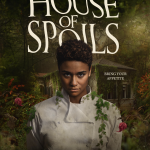While sweltering in the oppressive Texas heat in the summer of 1973, it’s doubtful Tobe Hooper and Kim Henkel thought the film they and their crew were making would forever change the horror genre, let alone be hailed as a cinematic masterpiece and eventually be preserved by a branch of the Library of Congress.
Yet, here we are…
The plot of The Texas Chainsaw Massacre is simplicity itself, its threadbare story one that had been told since cinema’s silent era. A group of travelers run into trouble, take a wrong turn and wind up in the midst of a nightmare, their sense of displacement exacerbated by an inexplicable threat.
Yet, it’s how Hooper frames and constructs the story that separates it from other genre entries. The title itself promises we will witness the most gruesome of acts, a slaughter of the sort not seen before on the silver screen. Primed for the worst, viewers are eager and fearful for what they are about to see, the director taking advantage of this by creating a sense of foreboding that’s unparalleled.
The first image that assails the viewer is a grotesque piece of art consisting of a decomposing corpse, straddling a large monument, his hands cradling the head of another. This has been found at a cemetery where graves have been rifled through. The doomed group, which includes Jerry (Allen Danzinger), Kirk (William Vail) and Pam (Teri McMinn) as well as brother and sister, Franklin and Sally (Paul Partain and Marilyn Burns), are en route to the burial ground to ensure the remains of deceased family members have been undisturbed.
On the way, a newscast plays on the radio in their sweltering van that’s a litany of dire events. An out-of-control fire rages in the oil fields of Texas, a cholera epidemic is mentioned, as are two incidents of rioting, the collapse of a high-rise in Atlanta, a pair of grisly murders in Gary, Indiana, and a case in which an 18-month-old child has been found chained in the attic of its parents’ home. The world is out of joint, yet all these warning signs – including the ramblings of a drunken old man at the cemetery and Pam’s warning that “Saturn is in retrograde”- are ignored by the travelers. As a result, their fate is sealed.
Once the fatal wrong turn is made and the slaughter begins, Hooper pulls off one of the greatest pieces of sleight of hand in film history. Cutting on action throughout, he suggests the acts his hulking, killer Leatherface commits rather than showing them, knowing full well what viewers will see in their primed imaginations will be worse than what he could show them. Deafening, jarring sound effects and committed performances from his cast help in creating an atmosphere of dread that had not been achieved in the cinema before and rarely since.
There’s a seedy aesthetic to the film that smacks of an amateur documentary, Hooper’s fly-on-the-wall creating an intimate, uncomfortable sense of reality. Equally effective is his technique in placing his camera on the same level as or with the characters. In doing so, he hijacks the viewer, and we find ourselves trapped along with them in the Sawyer home or vainly trying to flee. Attached to them, we’re unable to turn tail and run, like we hope poor Kim and Pam will once them stumble into Leatherface’s domain. Much like the cat, curiosity gets the best of them, and they become the killer’s first victims. Needless to say, satisfaction doesn’t bring them back.
While much has been written regarding the tone and mood of the movie, the humor it contains is often overlooked. The windshield washing half-wit at the gas station where they stop, the Old Man (Jim Siedow) chastising his son (Edwin Neal) for allowing his chainsaw-wielding brother to destroy the front door and the perverse Sawyer clan mocking poor Sally when she awakens to find herself tied to a chair -a grisly repast in front her – all produce genuine humor, albeit of the darkest sort. Hooper cruelly toys with us in these moments, allowing the viewer a brief respite from the mayhem before yanking us back into his nightmare.
The Sawyers are victims of the economic and social upheaval of the early 1970’s, their workplace and home torn asunder by forces beyond their control. The slaughterhouse where generations of their family have worked has laid them off, machines now doing their work more efficiently. As a result, they’re forced to use their skill set to survive, this time harvesting wayward travelers rather than docile bovine. Done for sustenance as well as commerce, their “barbeque” is available at their filling station. That there is no fuel for sale at the establishment further underscores their sense of abandonment and desperation.
Regarding their family, the absence of a matriarch is obvious and has a profound effect on them. One imagines Mrs. Sawyer having left once times got rough, perhaps getting a job in a far-off town. Left to fend for themselves, the behavior of the Sawyer men devolves to its most primitive, their filthy home an effective metaphor for the decay of the nuclear family.
Yet Leatherface, the simplest of the family, does his best to fill this void. We witness him doing domestic chores, his grisly kitchen activities a grotesque display of meal preparation for the clan. The apron he wears and the mask he dons, replete with garish red lipstick and topped with a cheap wig, suggests a conscious effort to become a perverse mother-figure.
We’re in the palm of Hooper’s hand throughout, the spell he weaves so powerful, there’s no escaping it even when our eyes are closed, our hands over our ears. The film’s dark images, both seen and suggested, haunt us long after we witness its unforgettable final image of the blood-drenched Sally – cinema’s first Final Girl- screaming in terror as Leatherface dances maniacally in the morning sun, chainsaw whirling about him as he turns in circles of delusion and delight. While moments from inferior knockoffs are swept to the dustbin of our minds, Massacre’s scenes are seared in our memories, their power growing as we further contemplate their meaning and horror.




